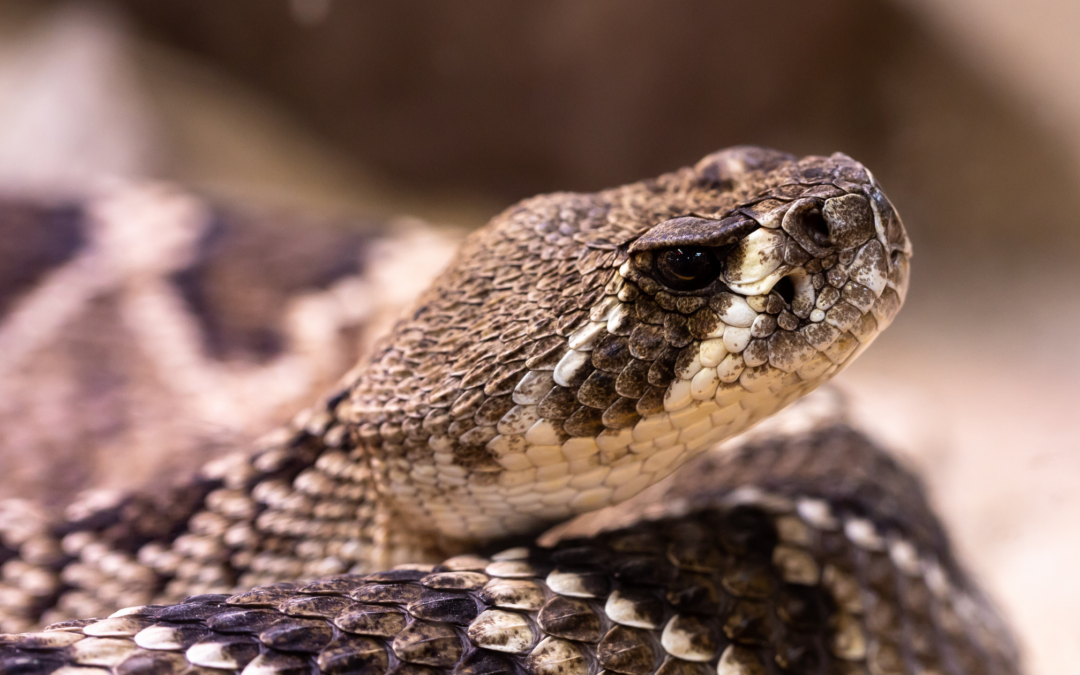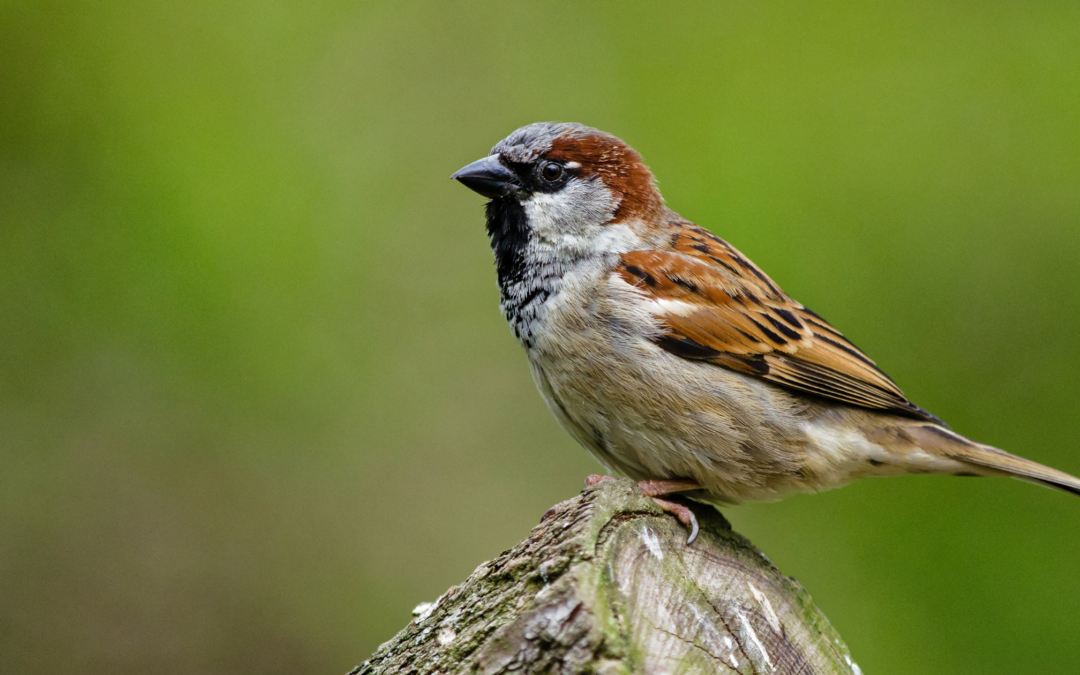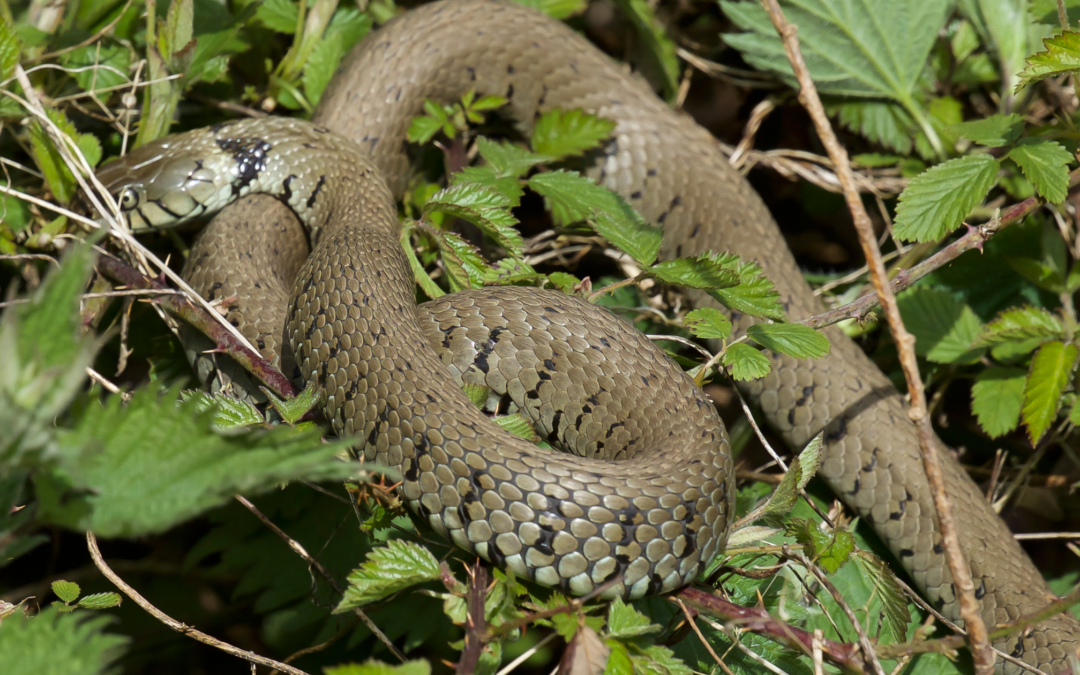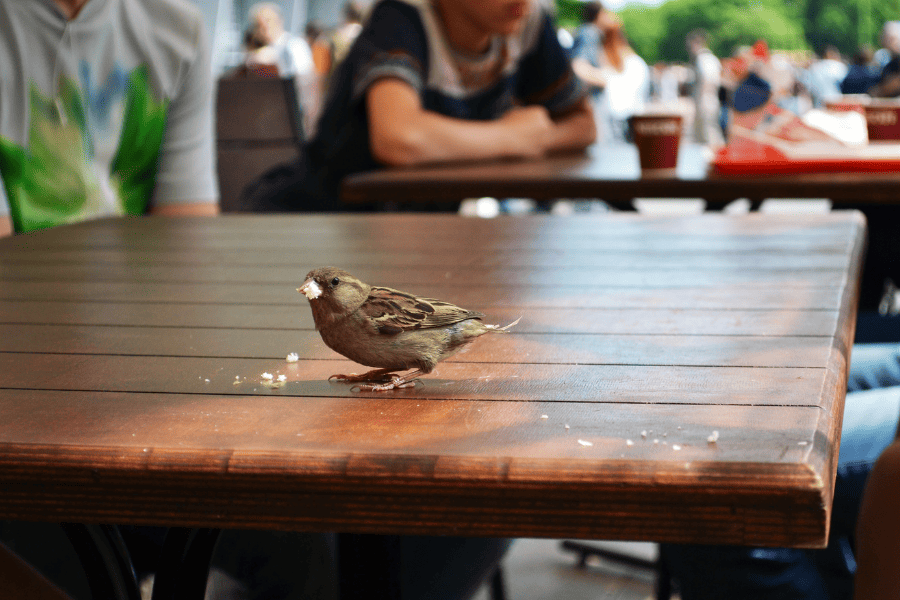
Jun 21, 2024 | DIY Pest Control, Wildlife
If you live in Georgia, you know that the state’s warm climate and diverse ecosystems are home to a variety of wildlife, including snakes. Encountering a snake in your yard or home can be unsettling, but knowing how to handle the situation safely is crucial. This guide will provide you with essential information on what to do if you come across a snake, how to identify venomous and nonvenomous snakes in Georgia, how to practice safe snake removal, and prevent snakes from entering your property.
What to Do If You Encounter a Snake
Outdoors:
- Stay Calm and Keep Your Distance: If you see a snake outdoors, remain calm. Most snakes are non-aggressive and will avoid humans if given the chance.
- Observe from a Safe Distance: Do not try to touch or provoke the snake. Take a few steps back and give it space to move away.
- Identify the Snake: Use binoculars or a zoom lens to get a closer look without getting too close. This can help in identifying whether the snake is venomous or nonvenomous.
Indoors:
- Do Not Panic: If you find a snake inside your home, do not panic. Most indoor encounters are with nonvenomous snakes.
- Contain the Snake: If possible, isolate the snake in a room by closing the door and placing a towel at the bottom to prevent it from escaping.
- Call a Professional: For safe snake removal, contact a wildlife control company. Search for “snake removal near me” to find local professionals who can handle the situation.
Identifying Venomous vs. Nonvenomous Snakes in Georgia
Georgia is home to both venomous and nonvenomous snakes. Here are key identifiers:
Venomous Snakes:
- Eastern Diamondback Rattlesnake: Large, heavy-bodied with diamond-shaped patterns and a rattle on the tail.
- Copperhead: Distinctive hourglass-shaped bands across the body.
- Cottonmouth (Water Moccasin): Thick body, dark crossbands, and a distinctively white mouth.
- Coral Snake: Brightly colored with red, yellow, and black bands. Remember the rhyme: “Red touches yellow, kills a fellow; red touches black, friend of Jack.”
Nonvenomous Snakes:
- Eastern Garter Snake: Striped pattern running lengthwise down the body.
- Rat Snake: Large and often black or yellow with a checkerboard pattern.
- King Snake: Black with white or yellow bands, often confused with the venomous coral snake.
Safe Snake Removal Methods
- Use a Snake Hook or Tongs: If you have experience, you can use snake hooks or tongs to safely remove a snake. These tools allow you to handle the snake without getting too close.
- Trap the Snake: Place a large bin or bucket over the snake, then gently slide a piece of cardboard underneath to lift and remove it.
- Contact Professionals: For those without experience, it’s best to call a wildlife control company. Professionals have the necessary tools and knowledge to handle snake removal safely.
Preventing Snakes from Entering Your Property
- Eliminate Food Sources: Snakes are attracted to areas with abundant prey. Keep your yard free of rodent populations and secure garbage bins.
- Remove Shelter: Clear away debris, woodpiles, and tall grass where snakes may hide.
- Seal Entry Points: Inspect your home for cracks and gaps. Seal openings around doors, windows, and foundations to prevent snakes from entering.
- Use Snake Repellent: Commercial snake repellents can be effective in deterring snakes from your property. Follow the instructions carefully for the best results.
- Maintain Your Yard: Regularly mow the lawn and trim bushes to reduce hiding spots for snakes.
Who to Call for Snake Removal
If you’re dealing with a snake problem and need professional help, search for “snake removal near me” to find a trusted wildlife control company in your area. These experts can safely and humanely remove snakes from your property and provide advice on preventing future encounters.
Encountering a snake can be a frightening experience, but with the right knowledge and precautions, you can handle the situation safely. Remember to stay calm, keep your distance, and contact professionals for help with snake removal. By taking steps to prevent snakes from entering your property, you can reduce the likelihood of future encounters. Stay vigilant, and don’t hesitate to reach out to wildlife control companies for expert assistance in managing your snake problem.

May 31, 2024 | DIY Wildlife Prevention, Wildlife
Living in the beautiful state of Georgia comes with its fair share of wildlife encounters, and one of the most feared encounters for many homeowners is stumbling upon a venomous snake. With over 40 species of snakes slithering through the Georgia landscape, it’s essential to know how to distinguish between harmless serpents and those that pose a threat. In this guide, we’ll explore common venomous snakes in Georgia, their identifying features, where they can be found, associated risks, and what to do if you encounter one. Additionally, we’ll provide tips on how to deter venomous snakes from entering your yard, ensuring a safer environment for you and your family.
Common Venomous Snakes in Georgia
- Eastern Diamondback Rattlesnake (Crotalus adamanteus)
- Identifying Features: Known for its distinctive diamond-shaped patterns along its back, this snake’s coloration ranges from gray to brown with dark brown or black diamonds outlined in white.
- Habitat: Eastern Diamondback Rattlesnakes prefer pine forests, coastal scrub habitats, and sandy areas.
- Risks: Their potent venom can be fatal if not treated promptly. They are known to be aggressive when threatened.
- Copperhead (Agkistrodon contortrix)
- Identifying Features: Copperheads have copper-colored heads and hourglass-shaped patterns along their bodies. They often blend well with their surroundings.
- Habitat: Copperheads are commonly found in wooded areas, rocky hillsides, and suburban neighborhoods.
- Risks: While their venom is less potent than other venomous snakes, a bite can still result in severe pain, swelling, and tissue damage.
- Eastern Coral Snake (Micrurus fulvius)
- Identifying Features: Recognizable by their brightly colored bands of red, yellow, and black, coral snakes have a distinct pattern: red touches yellow, kill a fellow; red touches black, venom lack.
- Habitat: They inhabit pine flatwoods, hardwood forests, and coastal plains.
- Risks: Coral snakes possess potent neurotoxic venom, although they are not aggressive and rarely bite humans.
What to Do If You Encounter a Venomous Snake
If you come across a venomous snake on your property or while out in nature, it’s crucial to remain calm and follow these steps:
- Give the Snake Space: Back away slowly to give the snake an escape route. Most snake bites occur when people try to handle or kill the snake.
- Do Not Provoke or Agitate: Venomous snakes will typically only strike if they feel threatened. Avoid sudden movements or loud noises that may startle the snake.
- Seek Medical Attention: If you or someone else is bitten by a venomous snake, seek medical attention immediately. Do not attempt to treat the bite yourself.
- Note the Snake’s Appearance: If it’s safe to do so, try to remember the snake’s color, pattern, and size. This information can help medical professionals determine the appropriate treatment.
Deterring Venomous Snakes from Your Yard
Prevention is key when it comes to keeping venomous snakes away from your property. Here are some tips to deter them:
- Keep Your Yard Tidy: Remove clutter, such as piles of wood, debris, and tall grass, where snakes may hide.
- Seal Entry Points: Seal any gaps or holes in your home’s foundation, walls, and around doors and windows to prevent snakes from entering.
- Trim Vegetation: Keep shrubs, bushes, and grass trimmed short to reduce hiding spots for snakes.
- Use Snake Repellents: Consider using snake repellents or natural deterrents like mothballs or essential oils around the perimeter of your property.
- Consult a Wildlife Control Company: If you have a persistent snake problem, consider hiring a professional wildlife control company. They can safely remove snakes from your property and implement preventive measures to keep them from returning.
By familiarizing yourself with the common venomous snakes in Georgia and taking proactive measures to deter them from your property, you can minimize the risk of encountering these potentially dangerous reptiles. Remember, when it comes to venomous snakes, caution and prevention are your best defenses.
If you encounter a venomous snake on your property and need assistance with snake relocation or wildlife control, don’t hesitate to contact a reputable wildlife control company in your area. Stay safe and informed, and enjoy the beauty of Georgia’s wildlife responsibly.

May 17, 2024 | DIY Wildlife Prevention, Wildlife
Nestled in the heart of the South, Georgia boasts lush landscapes and vibrant wildlife. However, along with its natural beauty comes the challenge of dealing with nuisance birds. From pesky pigeons to assertive seagulls, these feathered intruders can wreak havoc on homes and businesses alike. In this guide, we’ll explore common nuisance birds found in Georgia, the risks they pose, effective methods for bird control, and preventive measures to keep your property bird-free.
Common Nuisance Birds in Georgia
Georgia is home to a variety of bird species, some of which can become unwelcome guests on your property. Among the most common nuisance birds encountered in the state are:
- Pigeons: Found in urban areas and often congregating around buildings and bridges, pigeons are notorious for their droppings, which can damage structures and pose health risks.
- Sparrows: These small birds are adept at finding their way into buildings through small openings, where they may roost and nest, causing damage and spreading disease.
- Starlings: Known for their large flocks and noisy behavior, starlings can quickly become a nuisance, especially around agricultural areas where they can damage crops.
- Seagulls: While typically associated with coastal regions, seagulls can also be found inland, scavenging for food in urban and suburban areas. Their aggressive behavior and droppings can pose significant problems for property owners.
Risks Posed by Nuisance Birds
Beyond their irritating presence, nuisance birds can pose several risks to both property and human health:
- Property Damage: Bird droppings contain uric acid, which can corrode building materials such as metal, wood, and stone. Accumulated droppings can deface structures and lead to costly repairs.
- Health Hazards: Bird droppings can harbor harmful bacteria, fungi, and parasites, posing health risks to humans and pets. Inhaling airborne particles from dried bird droppings can also cause respiratory issues.
- Nesting and Roosting: Birds often nest and roost in eaves, vents, and other sheltered areas of buildings, leading to clogged gutters, damaged insulation, and fire hazards from nesting materials near electrical fixtures.
How to Get Rid of Nuisance Birds
When faced with a bird problem, it’s essential to employ effective bird control strategies. Here are some methods commonly used by wildlife control companies:
- Bird Spikes: Bird spikes are physical deterrents installed on ledges, signs, and other surfaces to prevent birds from roosting or landing. These spikes make it uncomfortable for birds to perch, encouraging them to seek alternative locations.
- Bird Netting: Bird netting creates a barrier that prevents birds from accessing specific areas, such as rooftops or balconies. It’s an effective solution for large open spaces where other deterrents may not be practical.
- Bird Repellents: Various bird repellents, including visual deterrents like scarecrows and reflective tape, as well as auditory deterrents like ultrasonic devices, can deter birds from settling in unwanted areas.
- Exclusion Devices: Installing screens, vents, and other exclusion devices can prevent birds from entering buildings and nesting in attics, vents, and chimneys.
- Habitat Modification: Removing food sources, such as open trash containers and bird feeders, can discourage birds from congregating in specific areas.
Preventing Nuisance Birds from Your Property
While effective bird control measures can help address existing bird problems, preventing future infestations is key to long-term success. Here are some preventive measures to consider:
- Seal Entry Points: Conduct regular inspections of your property to identify and seal any openings that birds could use to access buildings or nesting sites.
- Maintain Cleanliness: Keep outdoor areas clean and free of food scraps, garbage, and standing water, which can attract birds looking for food and water sources.
- Trim Trees and Shrubs: Trim trees and shrubs near buildings to eliminate potential roosting and nesting sites. Removing overhanging branches can also prevent birds from gaining access to rooftops.
- Install Bird-Proofing Devices: Proactively install bird-proofing devices, such as chimney caps and vent covers, to prevent birds from nesting in vulnerable areas.
- Implement Routine Maintenance: Regularly inspect and maintain your property to address any potential bird-attracting conditions, such as clogged gutters, leaky pipes, and damaged roofing materials.
Dealing with nuisance birds can be a challenging task for property owners, but with the right approach, it’s possible to keep these feathered intruders at bay. By understanding the common nuisance birds found in Georgia, recognizing the risks they pose, and implementing effective bird control and prevention strategies, you can protect your property from damage and ensure a bird-free environment. Whether you’re facing a minor bird problem or a full-blown infestation, partnering with a reputable wildlife control company can provide expert assistance in addressing your bird control needs.

Mar 1, 2024 | Wildlife
As the weather warms up in Georgia, so does the activity of one of the area’s most misunderstood creatures: snakes. With snake season approaching, it’s essential to take proactive steps to ensure your yard is prepared for these slithery visitors. Whether you’re concerned about encountering venomous species or simply want to minimize their presence around your home, proper preparation and understanding are key. Here’s everything you need to know to get your yard ready for snake season:
When is Snake Season in North Georgia?
Snake season in Georgia typically begins in the spring, around March or April, and extends through the summer months until around September or October. During this time, snakes become more active as they emerge from hibernation and seek food, mates, and suitable habitats.
Common Snakes Found in North Georgia
Georgia is home to a variety of snake species, both venomous and non-venomous. Some of the most common snakes you may encounter include:
- Eastern Diamondback Rattlesnake
- Timber Rattlesnake
- Copperhead
- Eastern Coral Snake
- Eastern Rat Snake
- Black Racer
- Eastern Garter Snake
While most snakes in the region are harmless and play a vital role in controlling rodent populations, it’s essential to be able to identify venomous species and exercise caution when encountering any snake.
Snake Safety Tips for Outdoor Activities
Whether you’re gardening, hiking, or simply enjoying time outdoors, it’s crucial to practice snake safety to minimize the risk of encounters. Here are some tips to keep in mind:
- Wear sturdy shoes and long pants when walking in areas where snakes may be present.
- Stay on designated trails and avoid tall grass, brush piles, and rocky outcroppings where snakes may hide.
- Be cautious when reaching into dark, secluded areas such as woodpiles, rock crevices, or garden beds.
- Keep pets on a leash and supervise them while outdoors to prevent snake encounters.
- If you encounter a snake, maintain a safe distance and allow it to move away on its own. Avoid startling or antagonizing the snake.
Tips to Deter Snakes from Your Yard
While it’s impossible to completely eliminate snakes from your property, there are steps you can take to make your yard less attractive to them:
- Keep grass and vegetation trimmed short to reduce hiding places for snakes and their prey.
- Remove debris, such as logs, brush piles, and rock piles, where snakes may seek shelter.
- Seal any gaps or cracks in buildings, foundations, and fencing to prevent snakes from entering your yard.
- Install snake-proof fencing around gardens, play areas, and other high-traffic areas to keep snakes out.
- Consider natural deterrents such as certain plants (e.g., marigolds, wormwood) or commercial repellents.
If you’re concerned about snakes or other wildlife on your property, don’t hesitate to reach out to a professional pest control company near you for assistance. Our team of experts specializes in humane snake relocation, snake control, and wildlife management services tailored to your specific needs. Request a free wildlife control quote today and enjoy peace of mind knowing your yard is in good hands.
As snake season approaches, taking proactive steps to prepare your yard can help minimize encounters and ensure a safe and enjoyable outdoor experience for you and your family. By understanding common snake species, practicing snake safety, and implementing effective deterrents, you can create a snake-friendly environment that strikes a balance between coexistence and control.

Jan 26, 2024 | Commercial, Wildlife
As much as birds are necessary, they can become a nuisance once they begin invading and damaging your business property and causing health concerns for your customers and employees. Whether it’s a restaurant, warehouse, commercial building, or store, these wildlife creatures can threaten your business’s bottom line. One of the best bird control methods to keep these birds from invading your business property is to create an undesirable environment for them. If you’re experiencing an influx of bird activity, there are several methods you can utilize to safely deter them from your business.
Common Bird Prevention Tips
Reduce Nesting Options
Create an environment less inciting to birds by removing limbs and branches from your business property. Additionally, look to routinely trim any surrounding trees around your property and if you have a lawn keep it mowed.
Utilize Deterrents
Consider mounting a plastic hawk or owl decoy on the roof of your building to scare nuisance birds away. Bird spikes and optical gel are another great tool to place on top of the building to encourage birds to perch and nest elsewhere.
Exclude Areas
Many birds are known to create nests around or under HVAC units because of the availability of water and shelter. To avoid this, consider netting or blocking off the area around your HVAC unit. If larger areas need excluding, it’s best to contact your local pest management company for assistance.
Remove Food Sources
Birds will continue to visit your property if there’s access to food sources. It’s crucial to make food and water sources inaccessible as much as possible by promptly removing all food debris and standing water. Likewise, discourage customers from feeding birds if they happen to land around your business.
Call a Professional
There are state rules and regulations on controlling birds from properties, so it’s best to contact your local wildlife control company to assist with any bird nuisance. These bird control professionals will provide you with a thorough inspection of your business and recommend the best methods to remove and prevent these birds from your property in the future.




